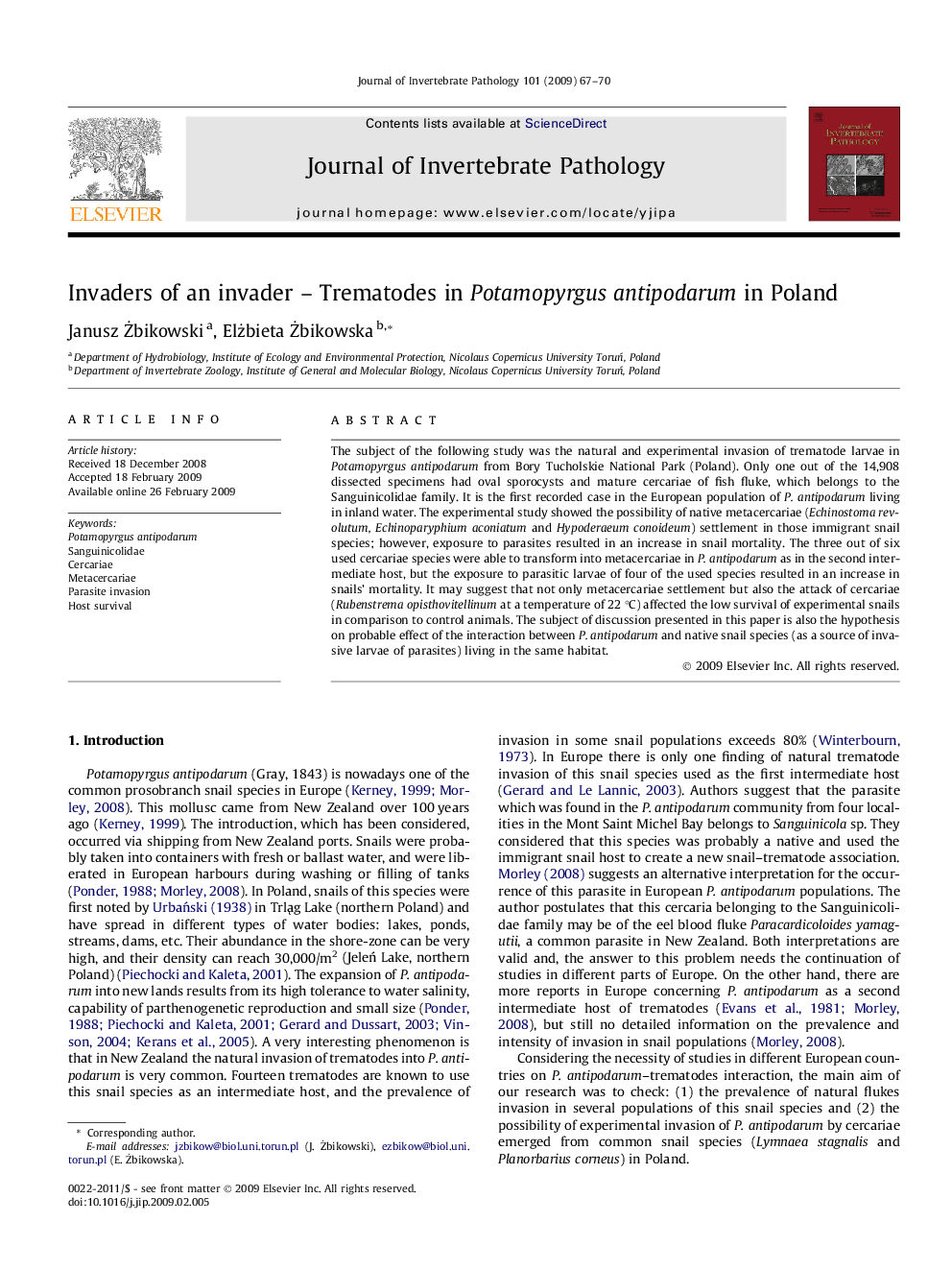| Article ID | Journal | Published Year | Pages | File Type |
|---|---|---|---|---|
| 4558239 | Journal of Invertebrate Pathology | 2009 | 4 Pages |
The subject of the following study was the natural and experimental invasion of trematode larvae in Potamopyrgus antipodarum from Bory Tucholskie National Park (Poland). Only one out of the 14,908 dissected specimens had oval sporocysts and mature cercariae of fish fluke, which belongs to the Sanguinicolidae family. It is the first recorded case in the European population of P. antipodarum living in inland water. The experimental study showed the possibility of native metacercariae (Echinostoma revolutum, Echinoparyphium aconiatum and Hypoderaeum conoideum) settlement in those immigrant snail species; however, exposure to parasites resulted in an increase in snail mortality. The three out of six used cercariae species were able to transform into metacercariae in P. antipodarum as in the second intermediate host, but the exposure to parasitic larvae of four of the used species resulted in an increase in snails’ mortality. It may suggest that not only metacercariae settlement but also the attack of cercariae (Rubenstrema opisthovitellinum at a temperature of 22 °C) affected the low survival of experimental snails in comparison to control animals. The subject of discussion presented in this paper is also the hypothesis on probable effect of the interaction between P. antipodarum and native snail species (as a source of invasive larvae of parasites) living in the same habitat.
